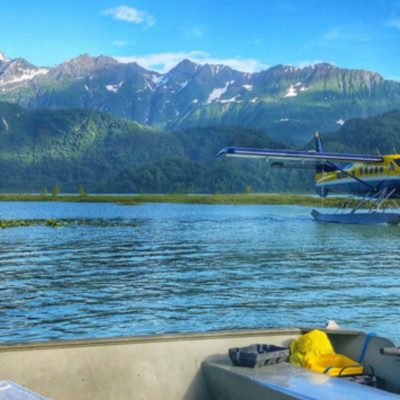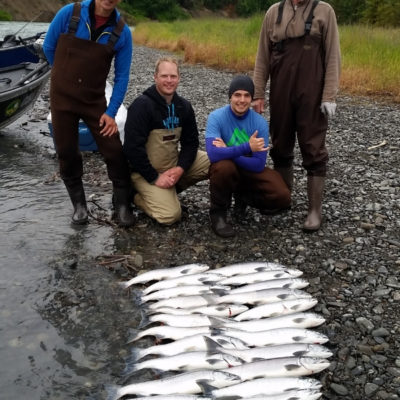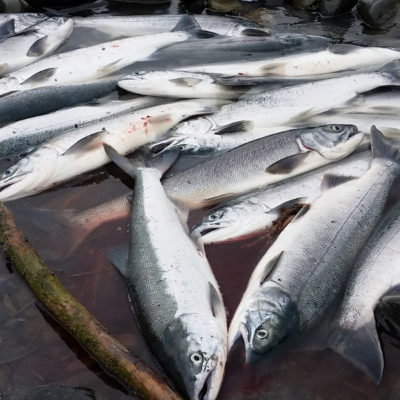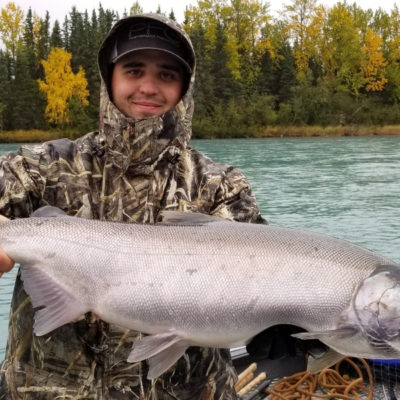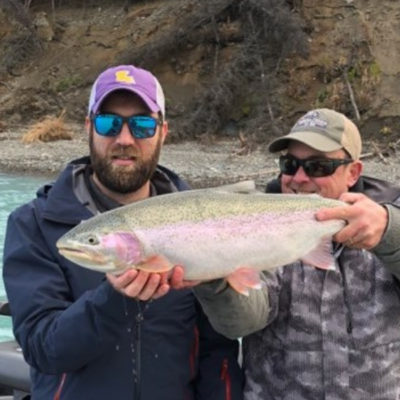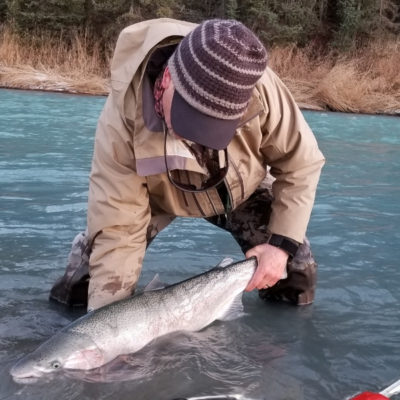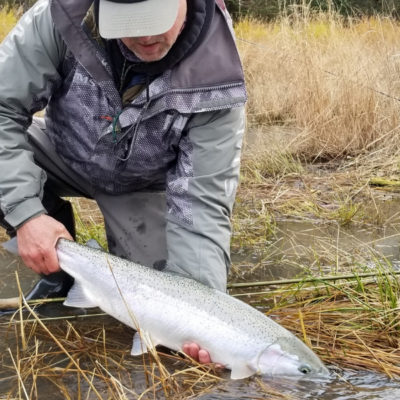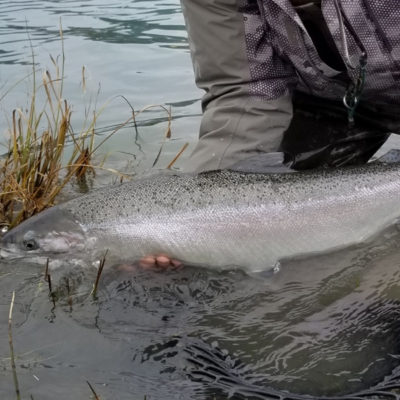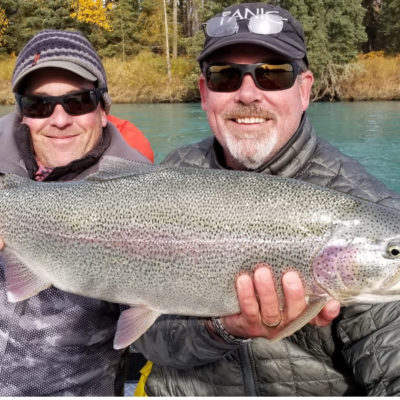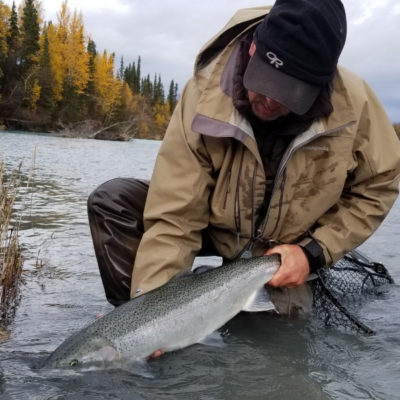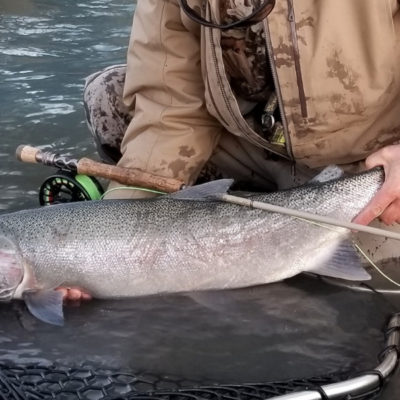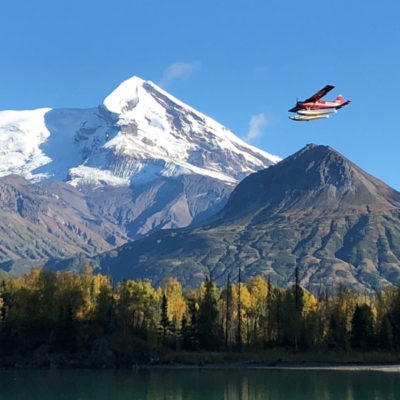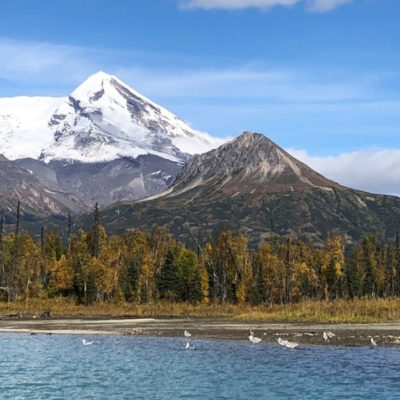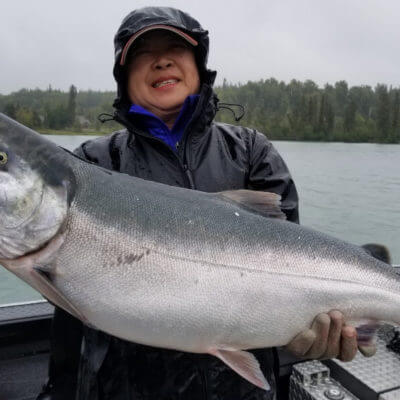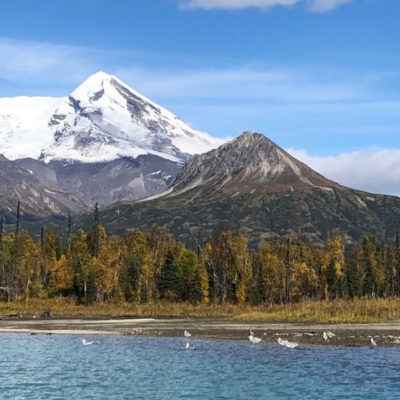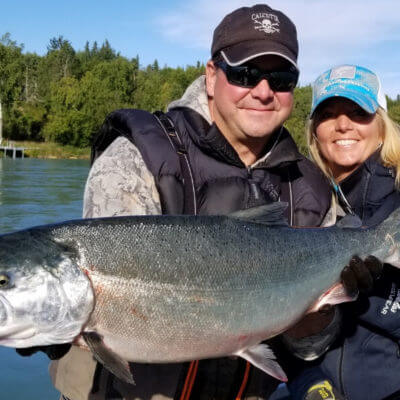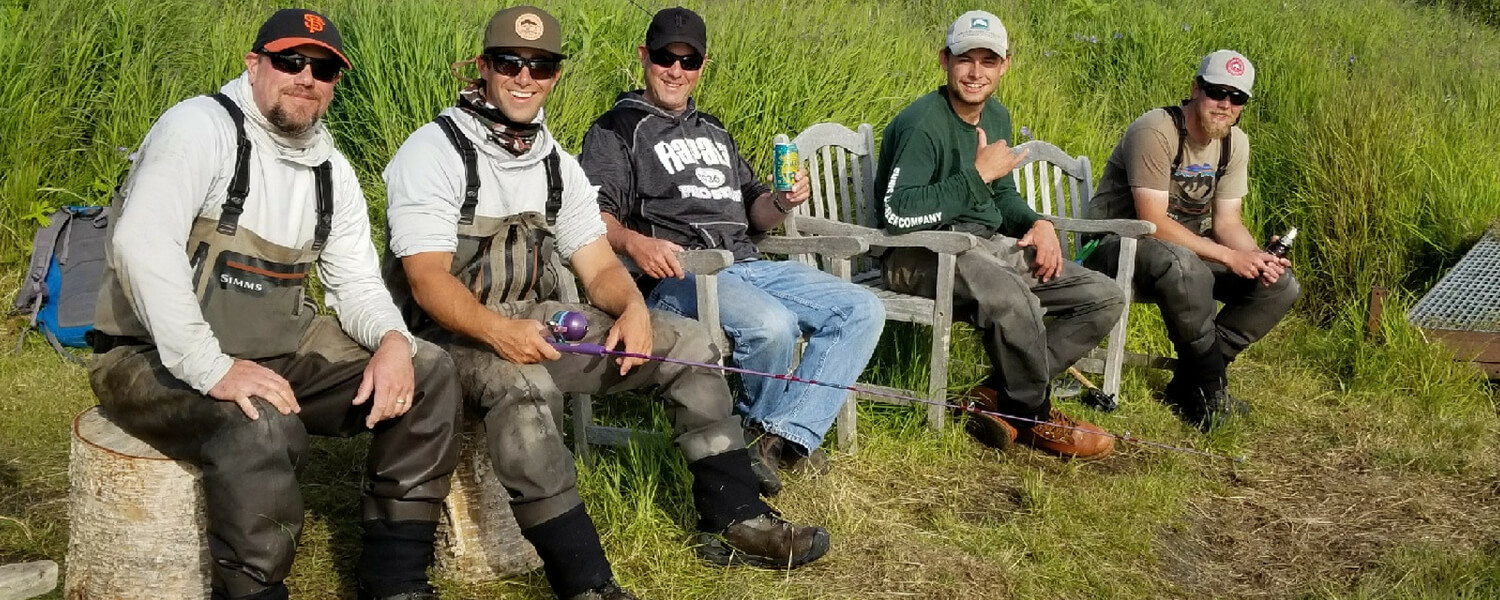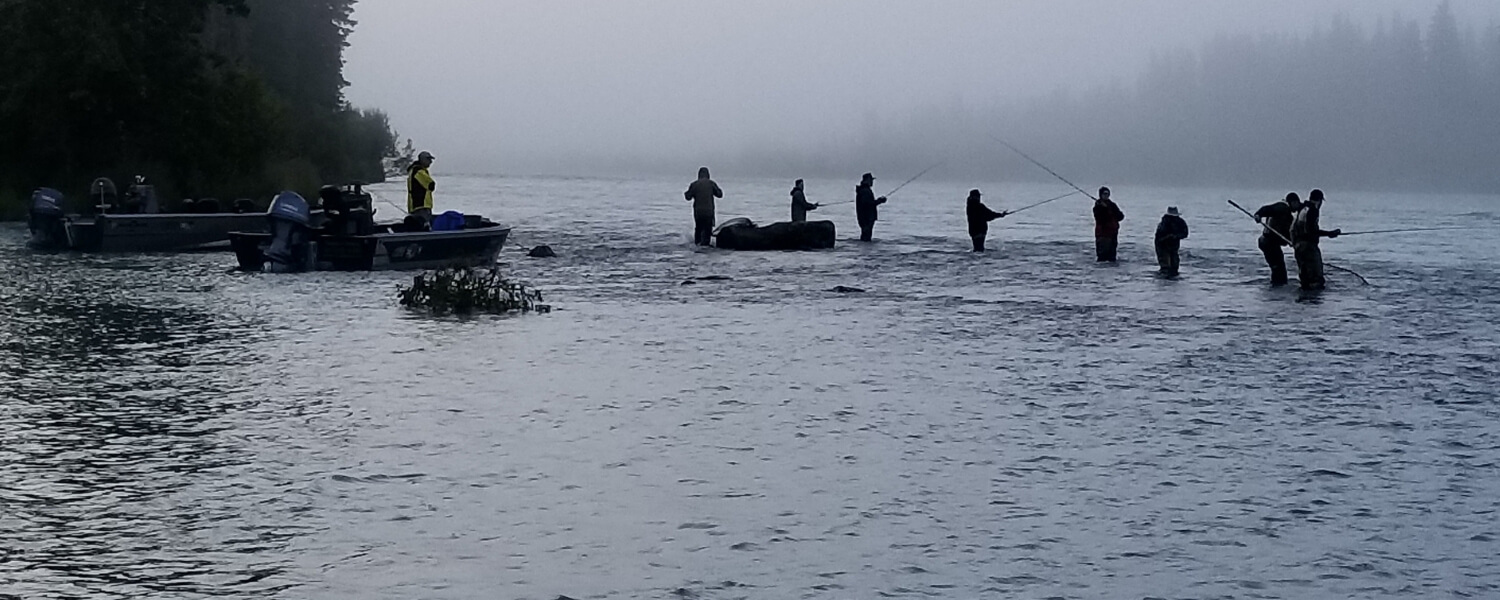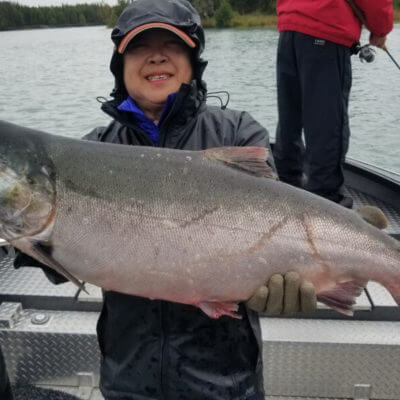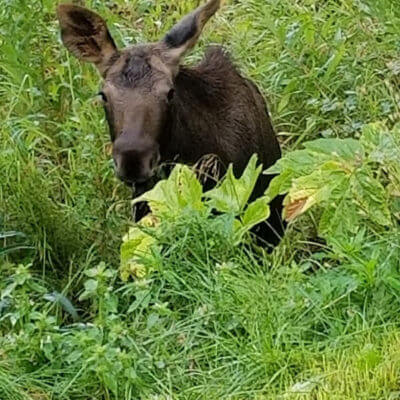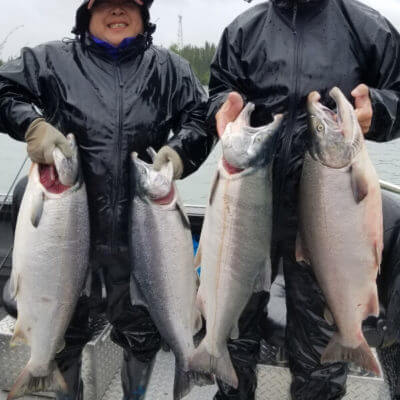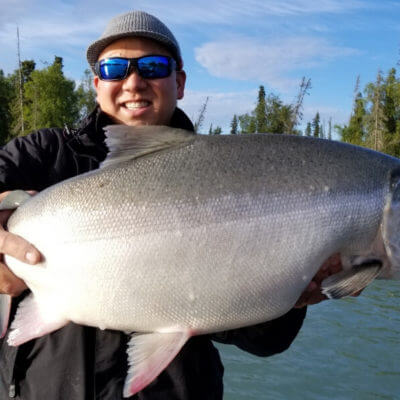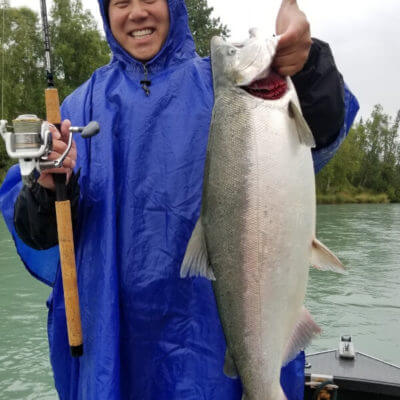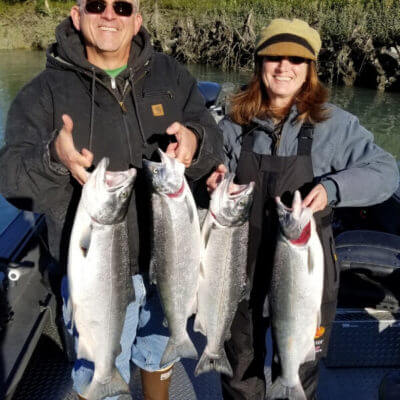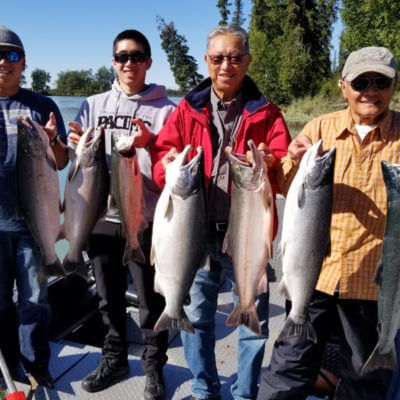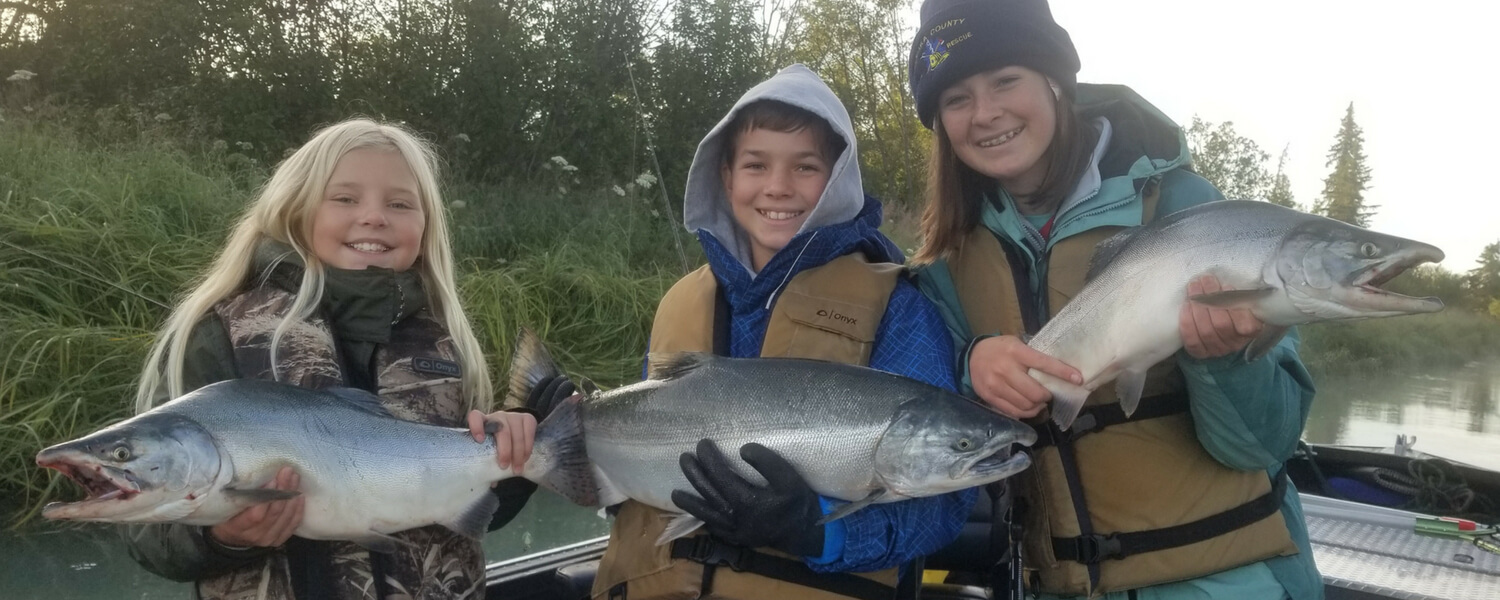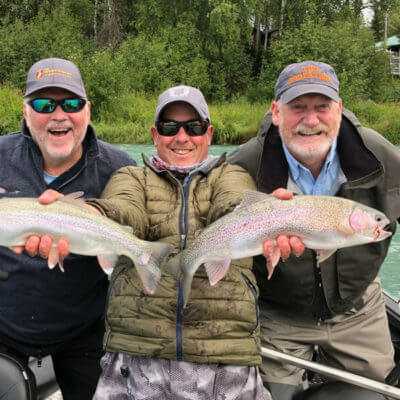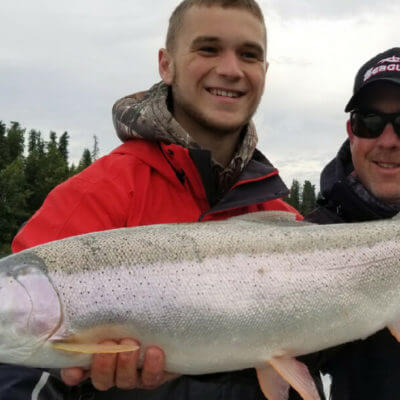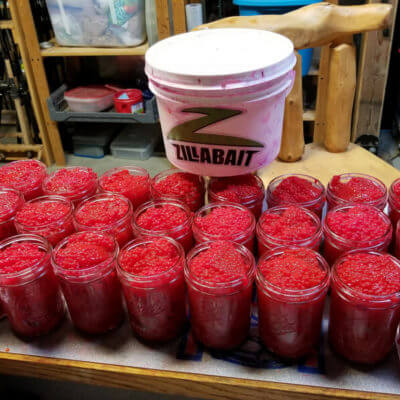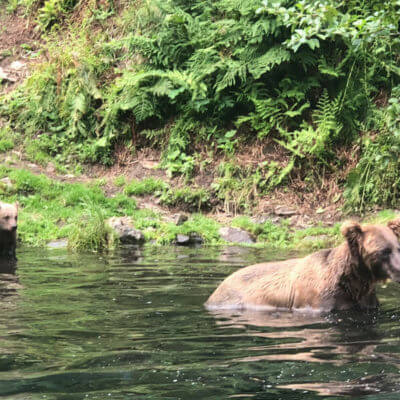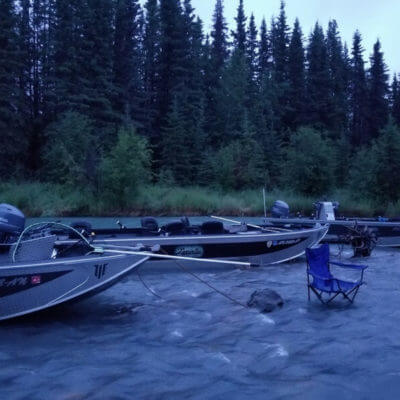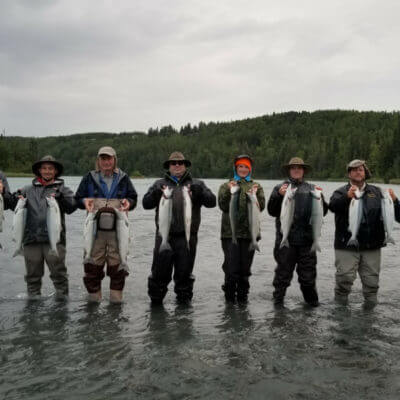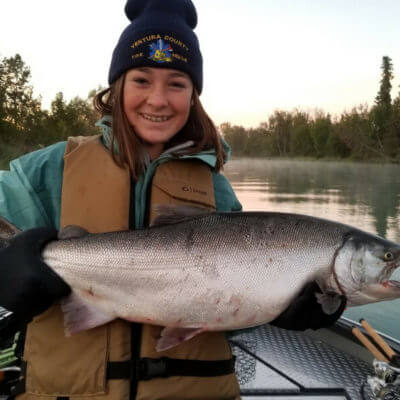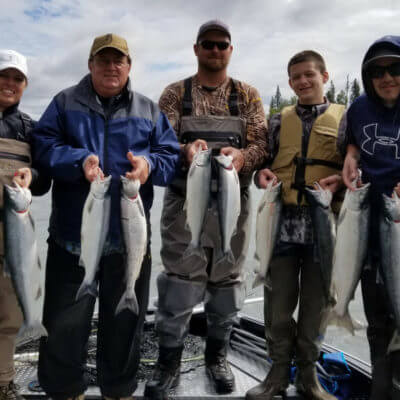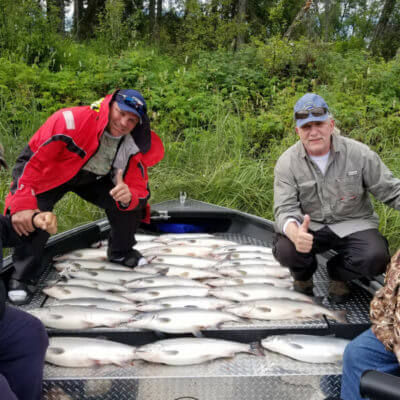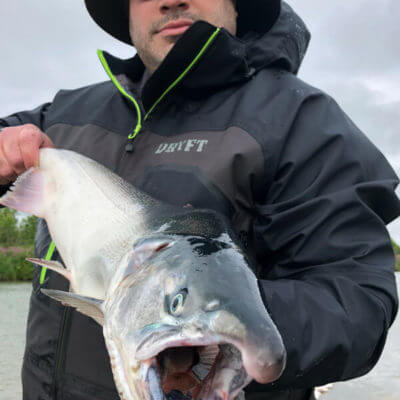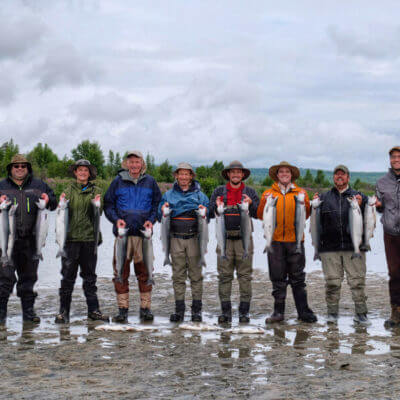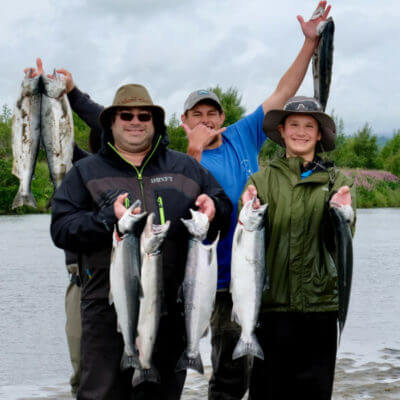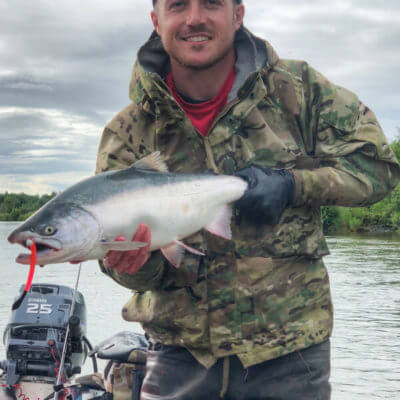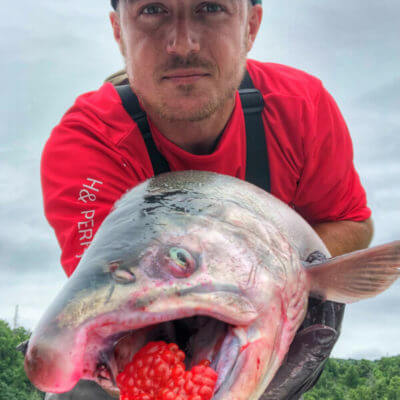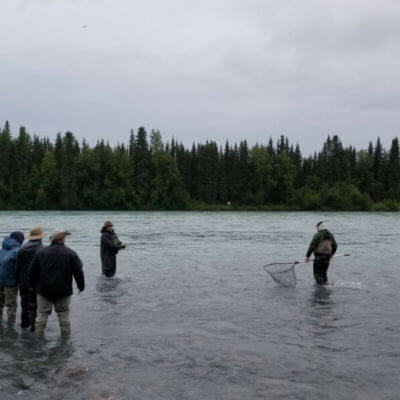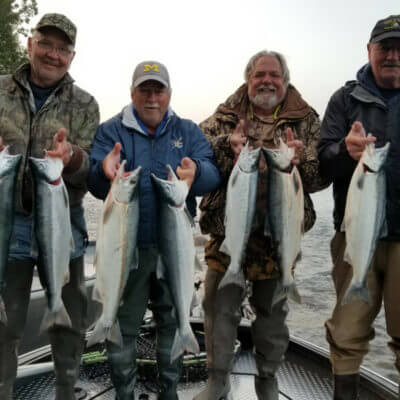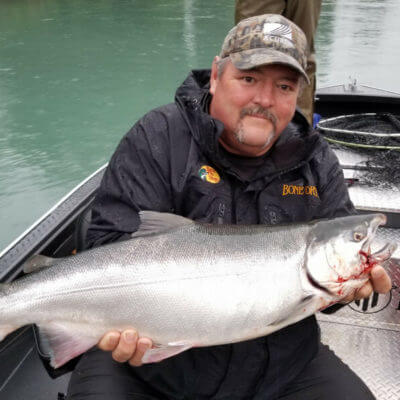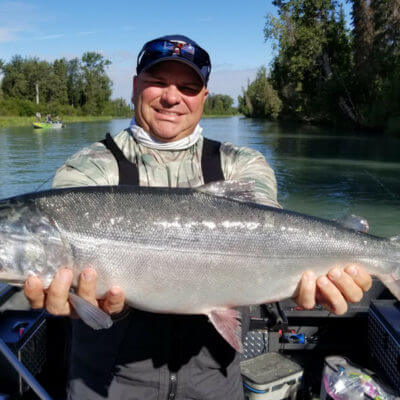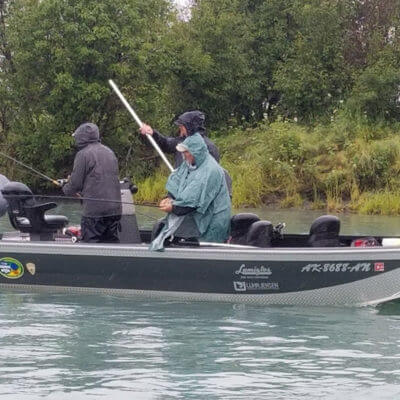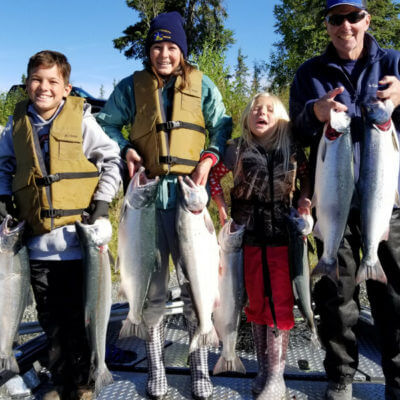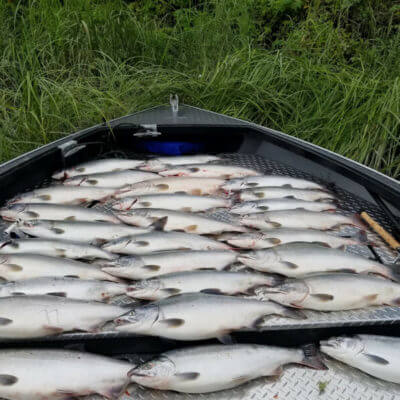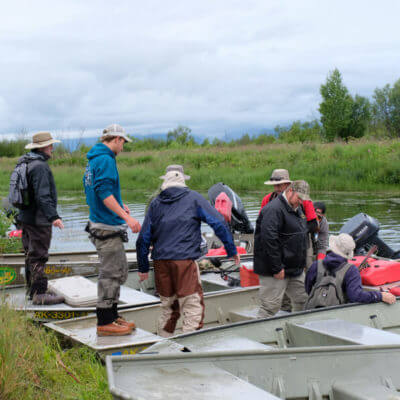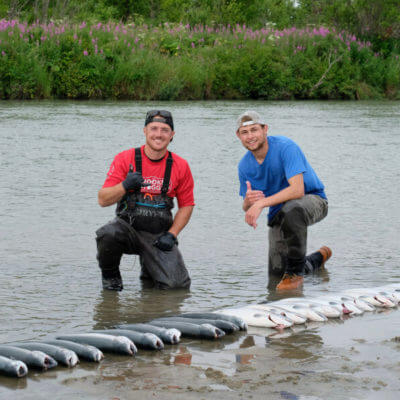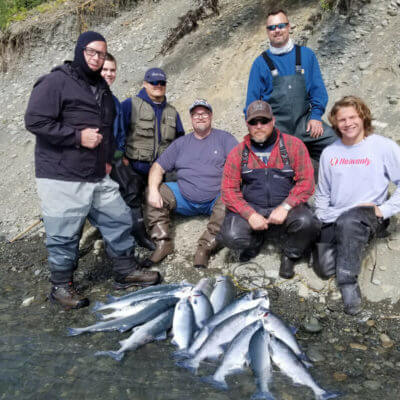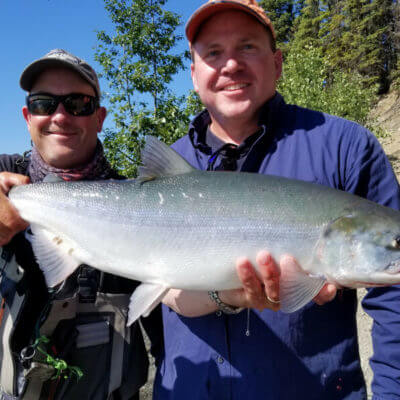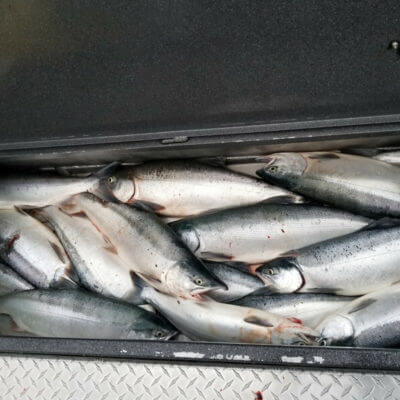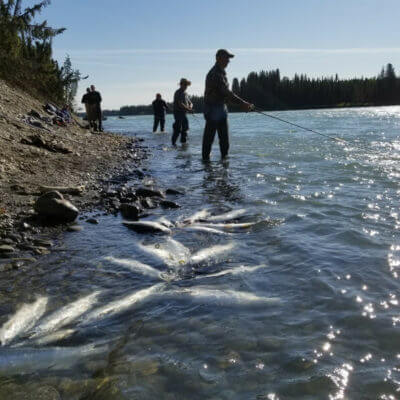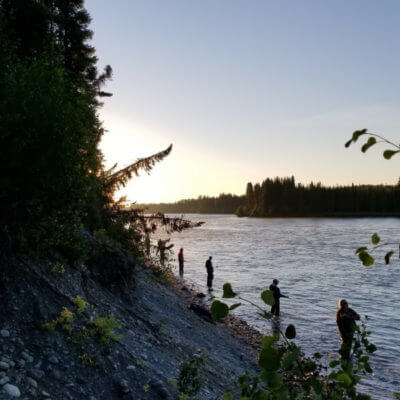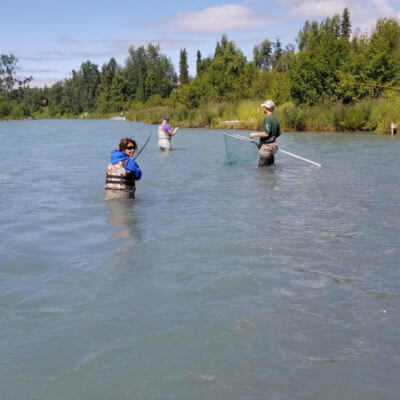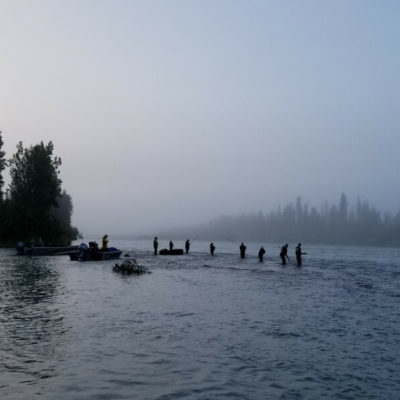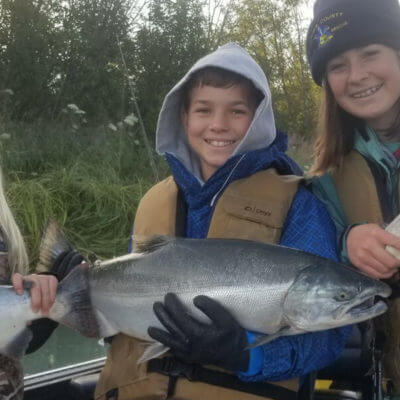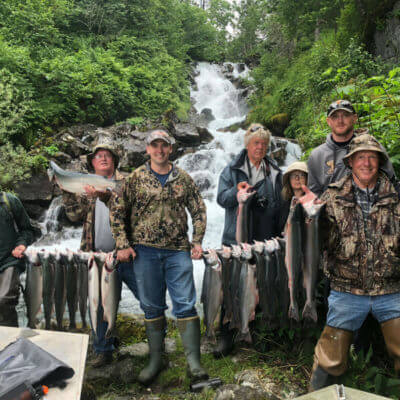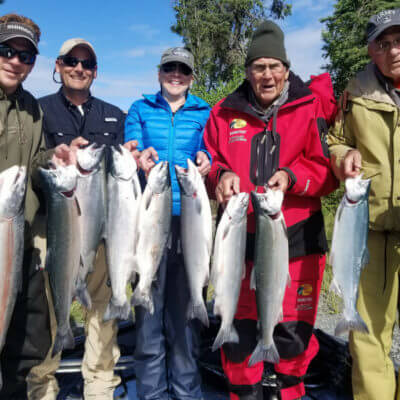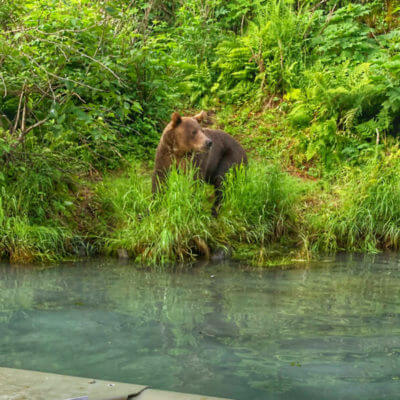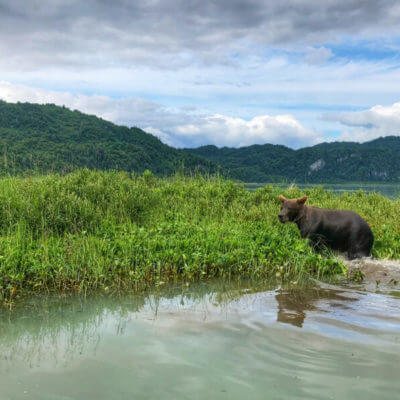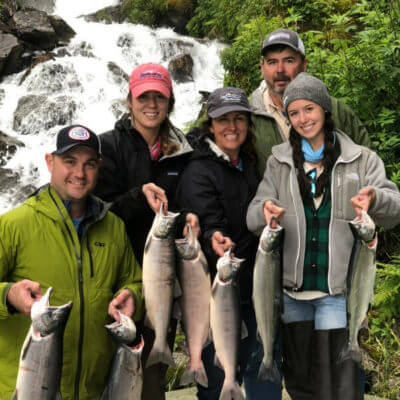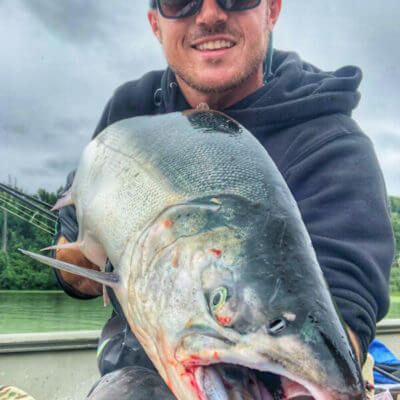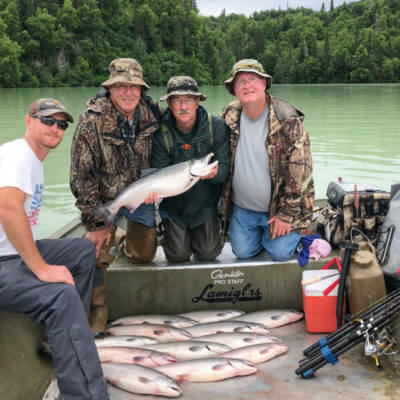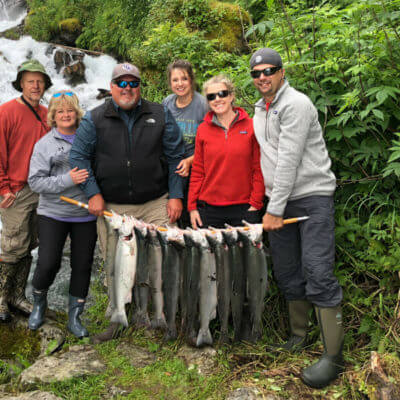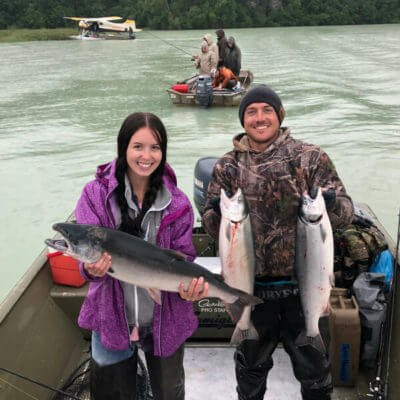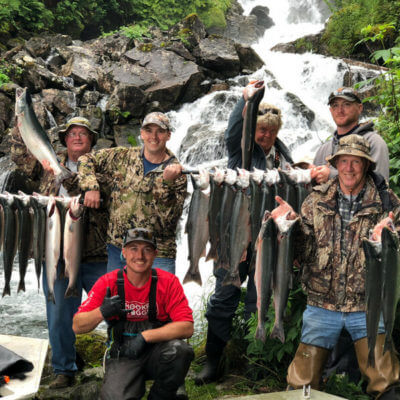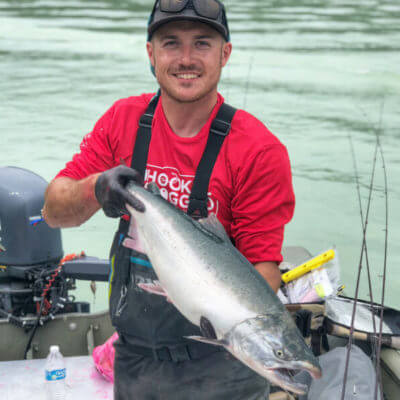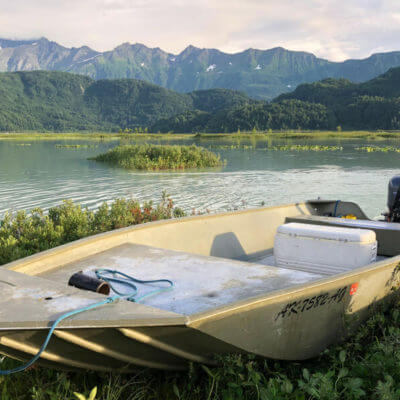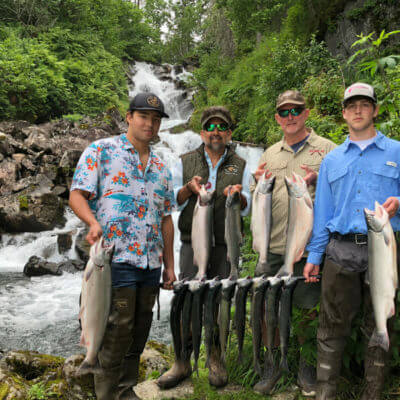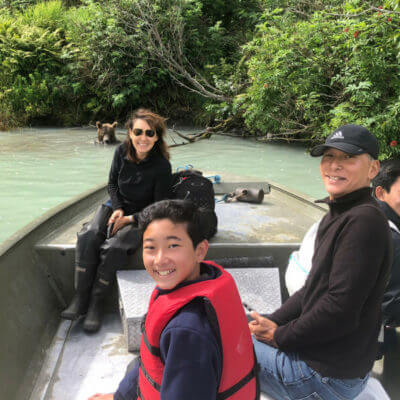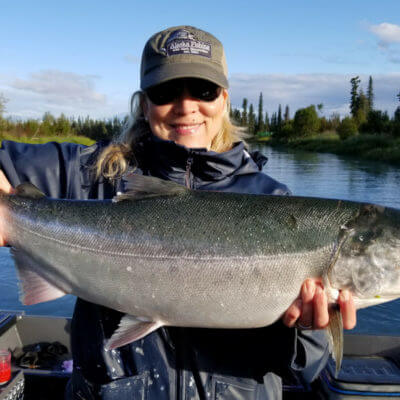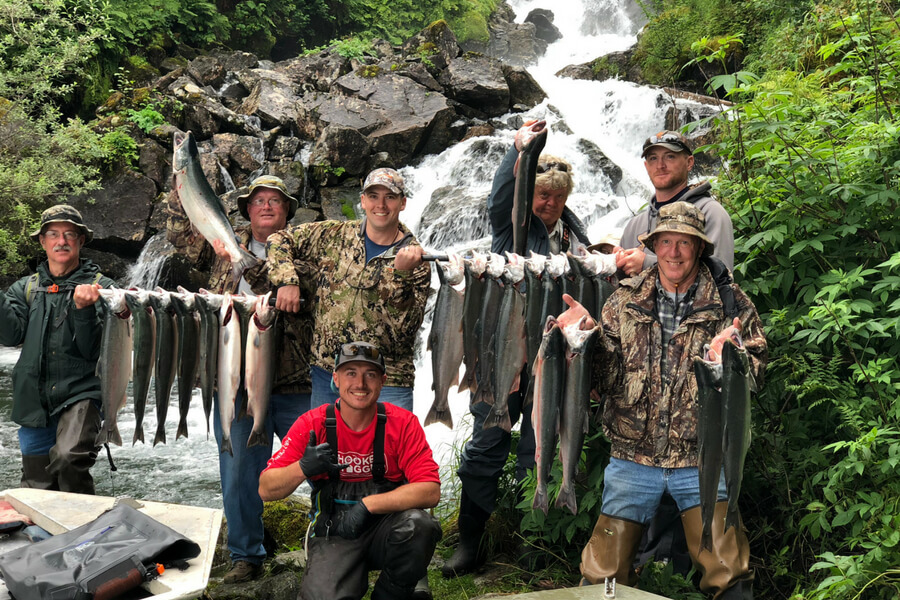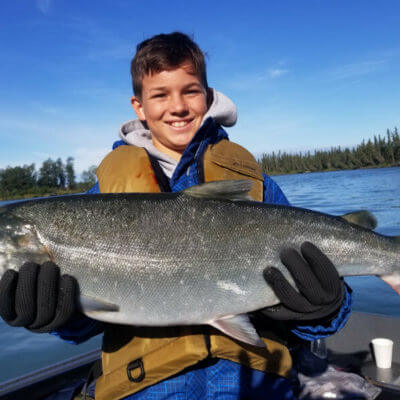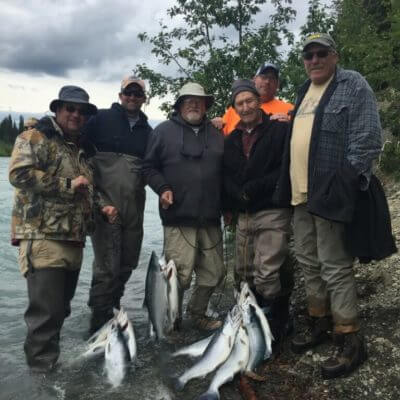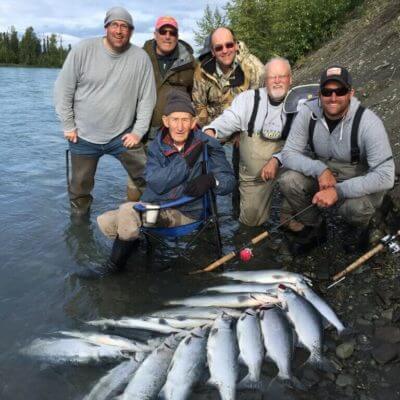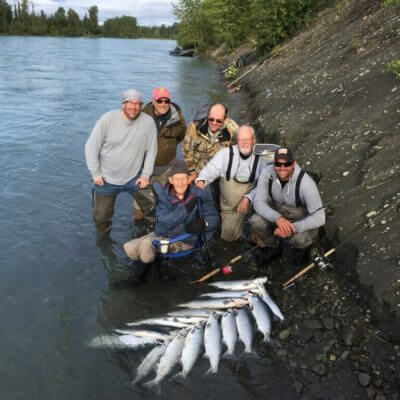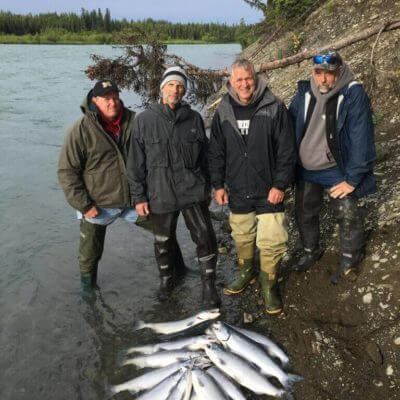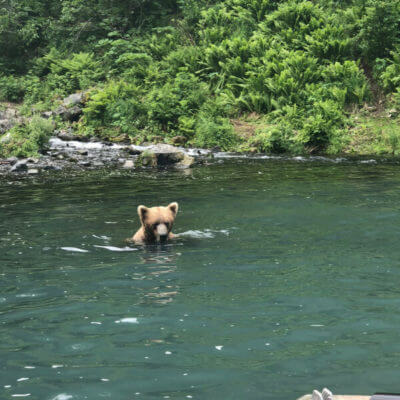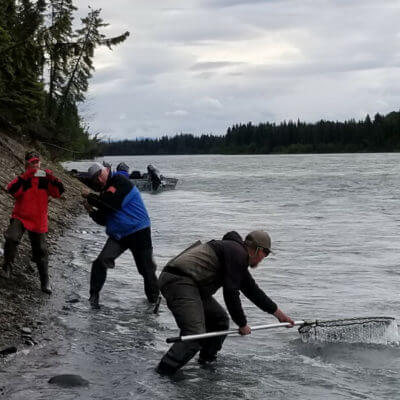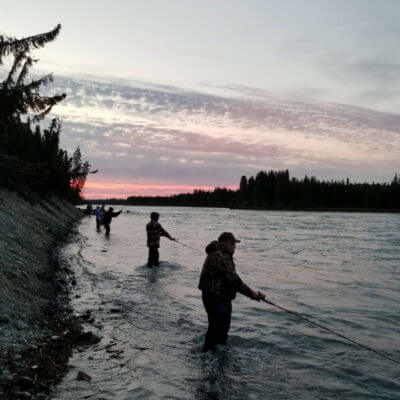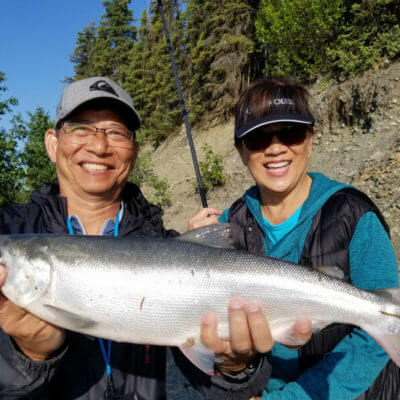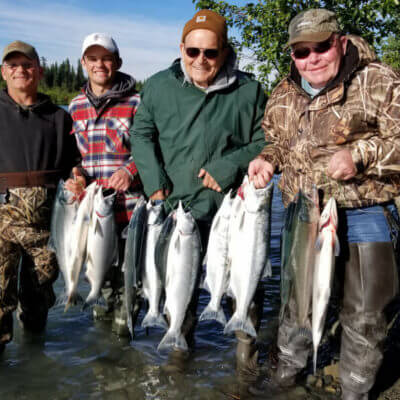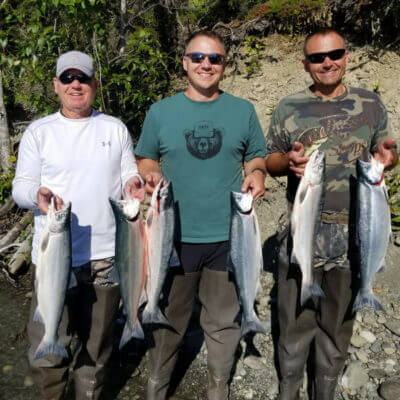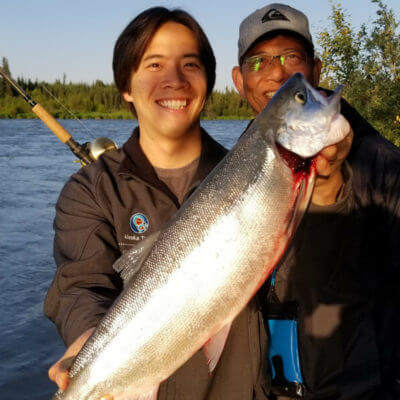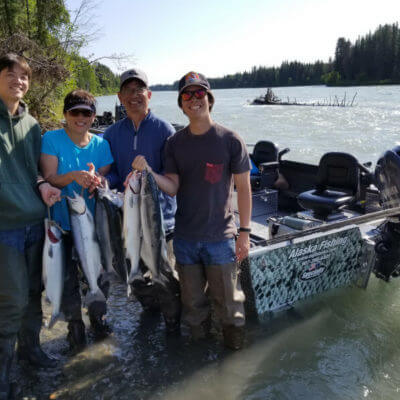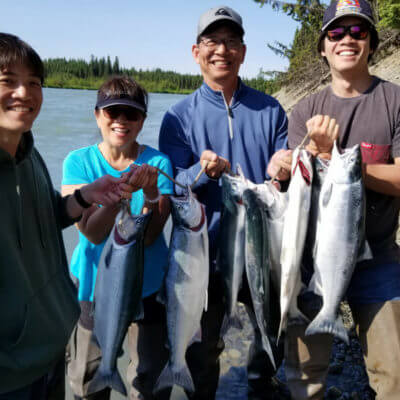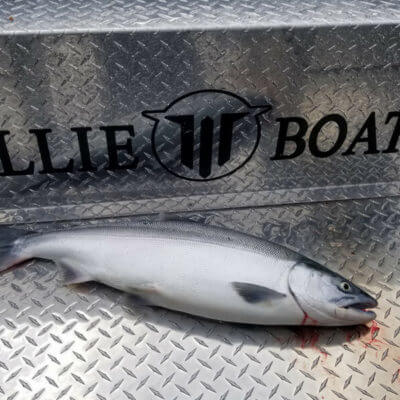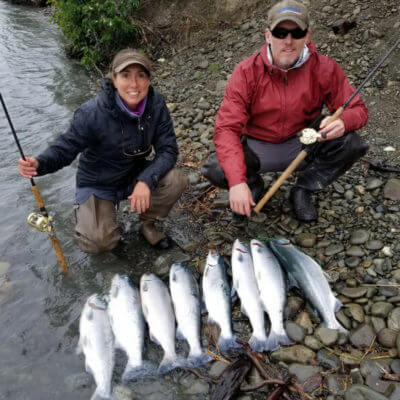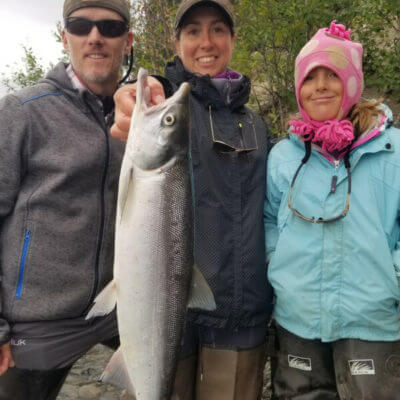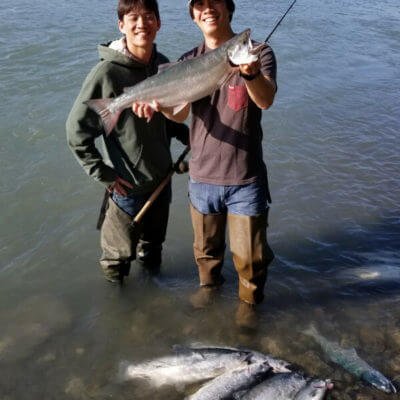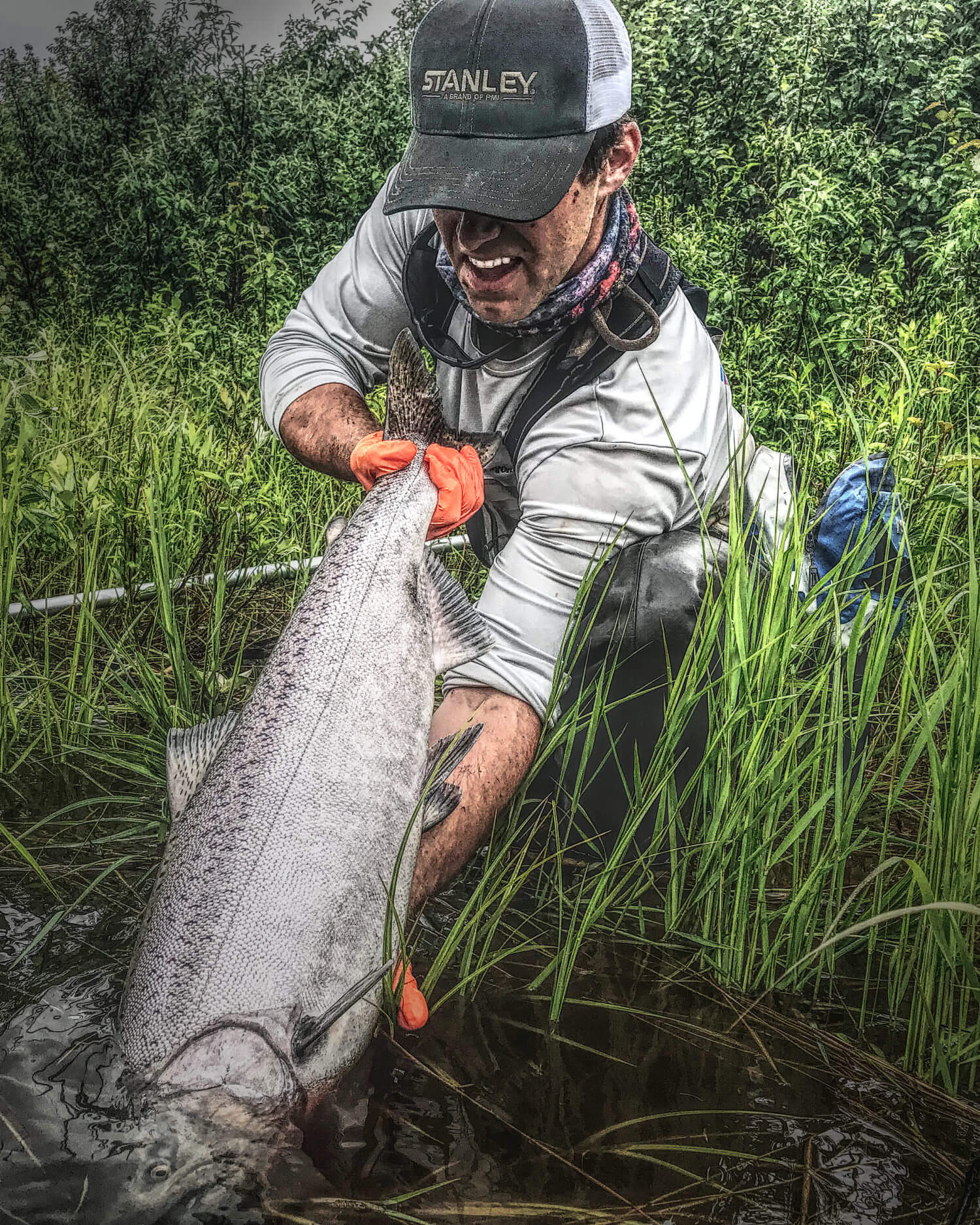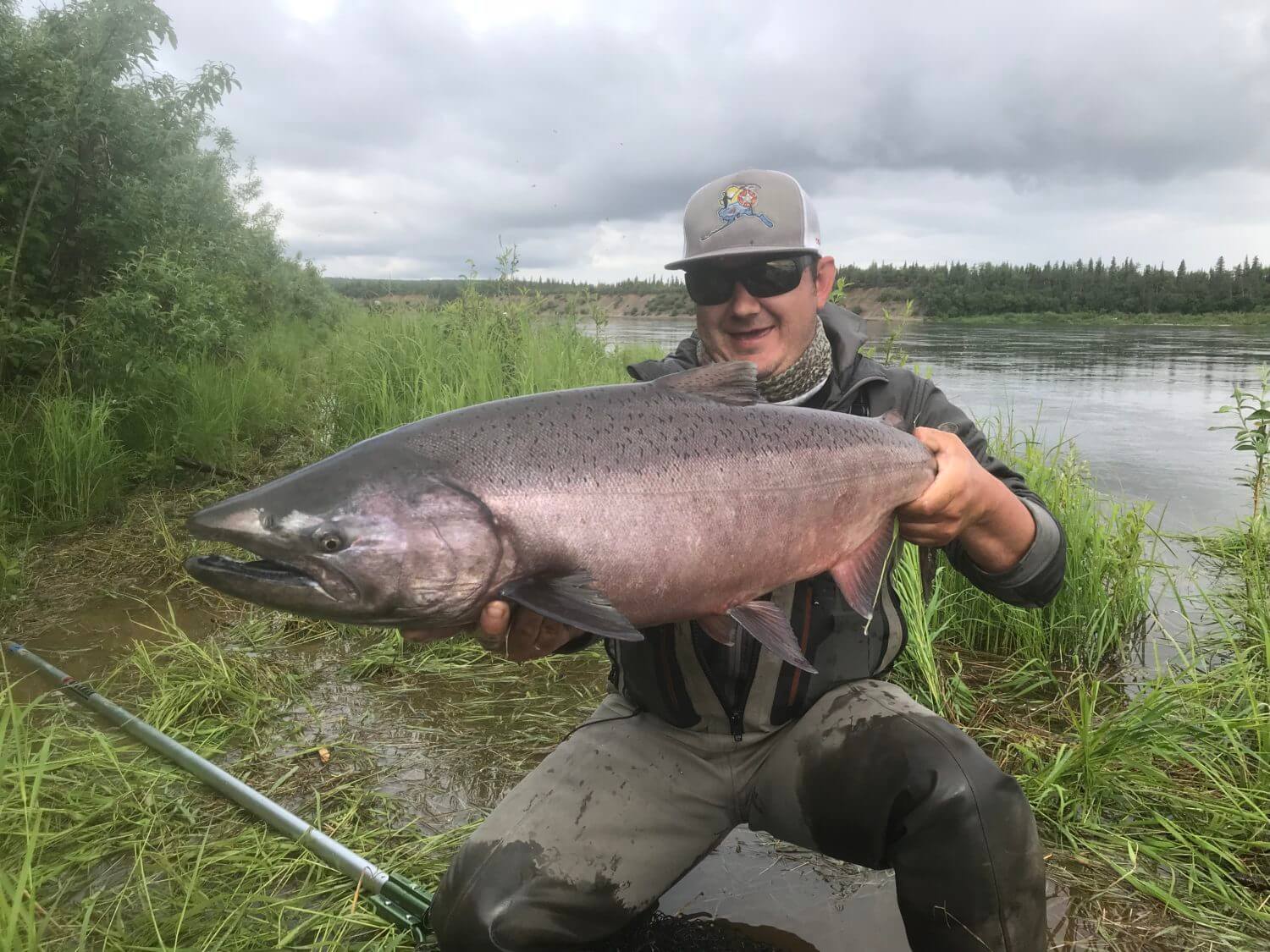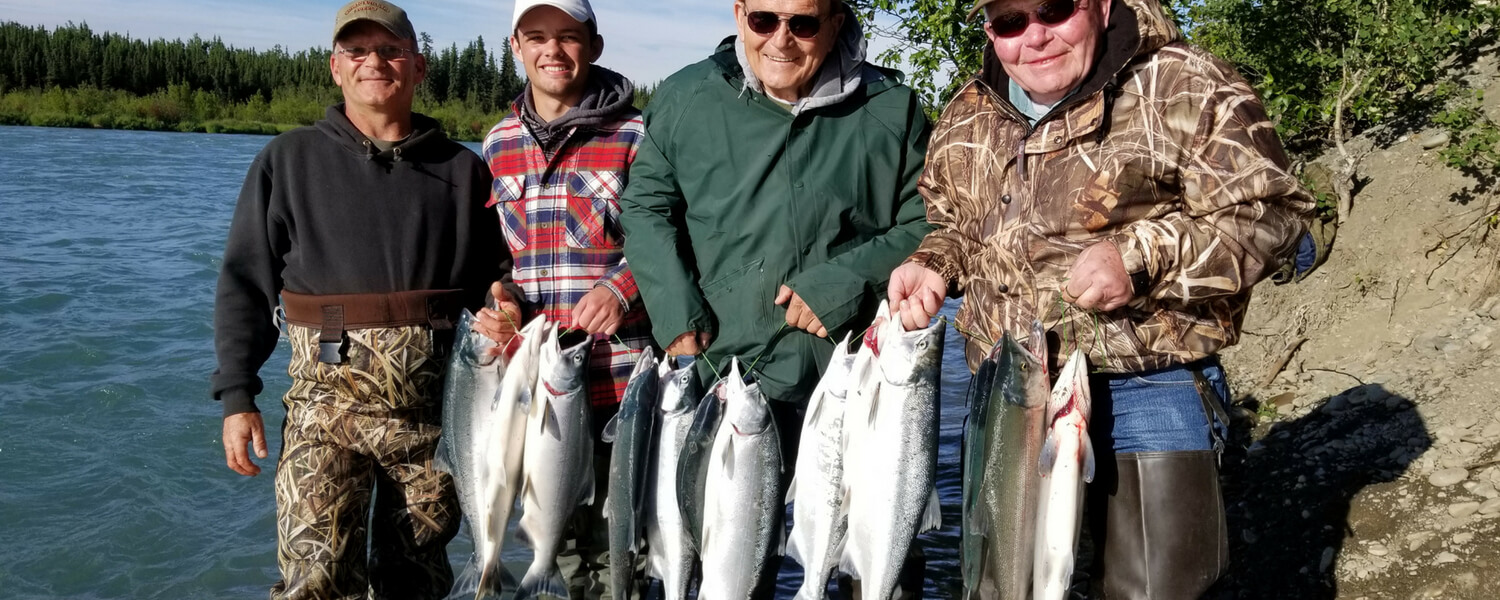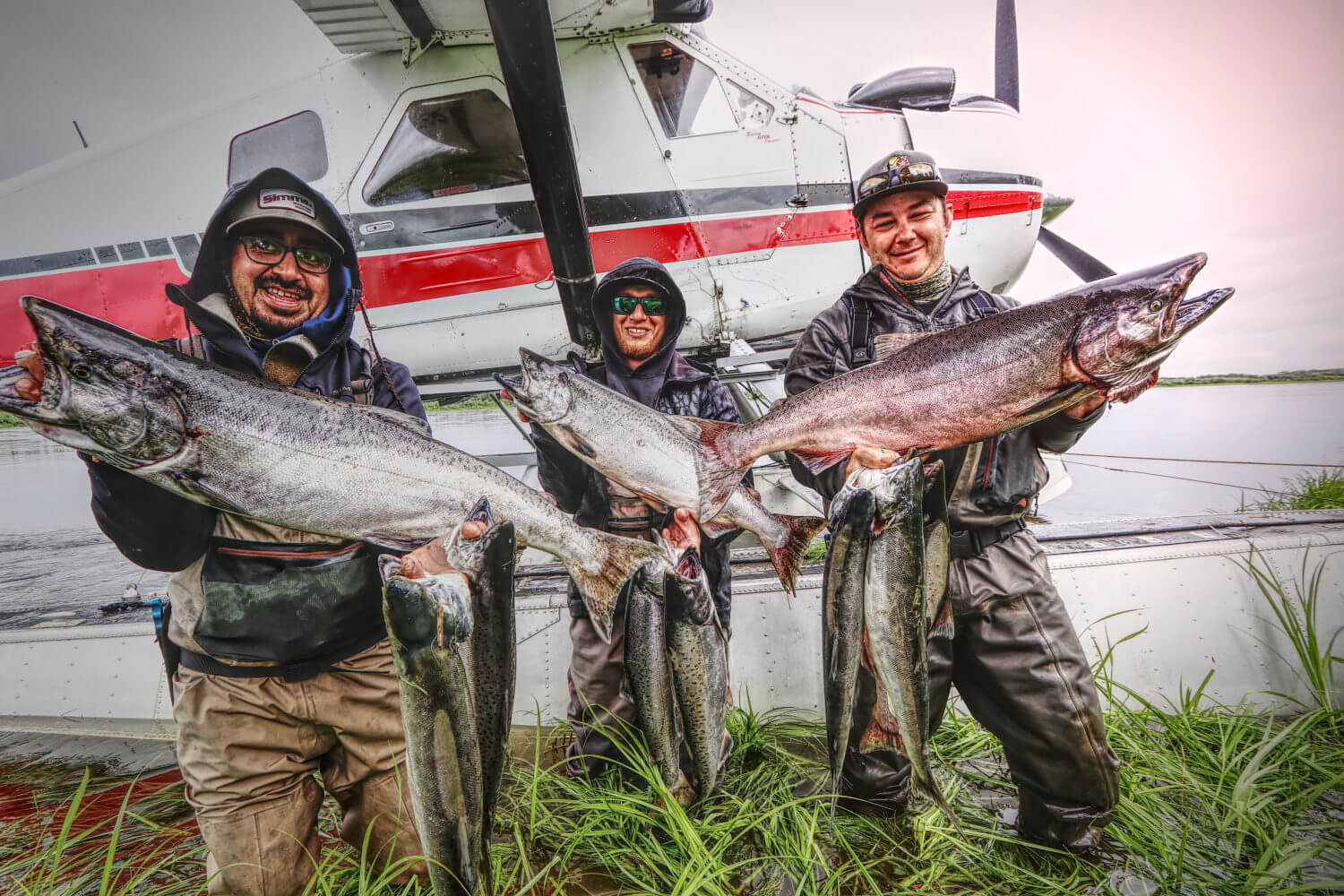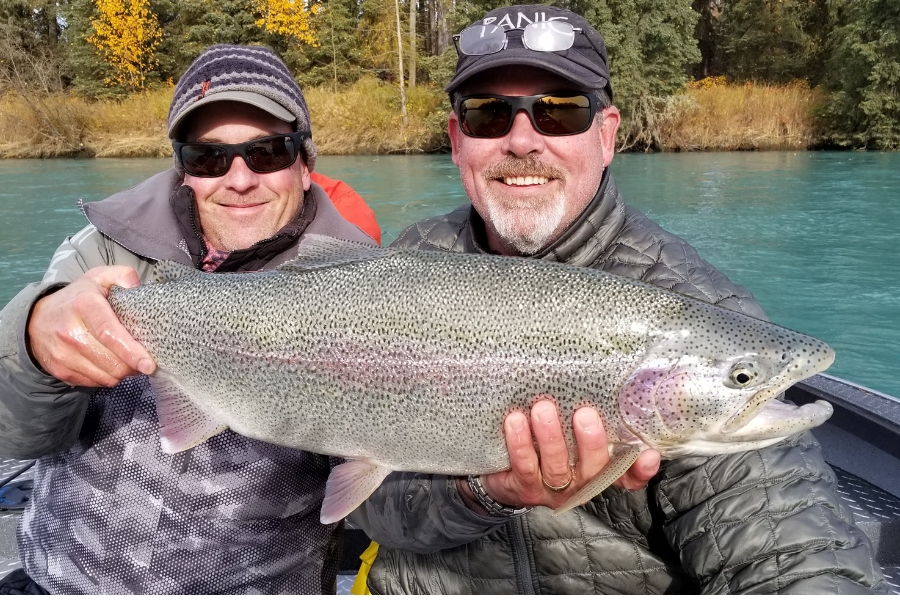
11 Jan Alaska Fishing Report: 2018 Year In Review
After 28 seasons guiding on the Kenai River, you would think the summers would blur together. Remarkably, each season has proved to be surprisingly unique and 2018 was definitely no exception. Unfortunately, the 2018 season will not be remembered for remarkable returns of either king salmon or sockeye but it will go down as one of the better early runs of silver and pink salmon as well as a very good late season for trophy trout and steelhead. Overall it was another amazing season and despite the up and downs we feel blessed to spend yet another summer basking in the midnight sun and chasing tails.
Unlike recent seasons where we entered the early run on the Kenai and the Kasilof with pre-season restrictions, the 2018 season began according to normal regulations with retention of kings under 36 inches on the Kenai and bait on the Kasilof open May 16 and retention of two fish (only one can be wild Tues, Thur, Sat). After a very strong return of kings in 2017, hopes were high for the trend to continue. We started the season as we normally do, fishing the bait opener on the Kasilof. While this is early in the run, one can usually expect a handful of bright kings to be caught on the opening day of bait and that was the case this year with a handful of boats enjoying their first success of the season. Despite a few fish being caught, it did seem somewhat slower than years past but again, it was early. As the season progressed, fishing was steady on the Kasilof and there was definitely enough action to keep you on your toes. Overall numbers were only average and there was a noticeable abundance of smaller males (bucks) in the 10-12 lb. range and a lack of the larger 18-25 lb. kings we are accustomed to catching. This trend persisted until the first signs of the late run began to arrive on the Kasilof in late June and early July. On the Kenai, the early run of king salmon mirrored rivers throughout Cook Inlet with overall low returns. The sonar counts coincided with fishing success and restrictions seemed inevitable. On June 11, the Kenai was limited to catch and release only and was eventually closed completely for king fishing on June 18 through June 30. On the Kasilof, king fishing was restricted to no bait and single hook only and the limit was reduced to only one hatchery fish per day. Despite the restrictions we continued to fish the Kasilof daily and we did see some decent fishing overall. We also pursued early run sockeye on both the Kenai and Kasilof and despite only average numbers of fish, we managed to out together some very nice stringers. Persistence and hard work always seems to pay off with the sockeye.
As we moved into late June and early July, our fly out fishing trips were seeing excellent success especially at Big River Lake. The sockeye returns to both Wolverine Creek and the south fork of Big River were both especially strong and that remained the case for the remainder of the season. Of course, with all the fish, there were also lots of bears and this combination of excellent fishing and amazing bear viewing is why this has always been one of our most popular trips. This late June, early July window is also the time we fly to the Nushagak for king salmon and this trip is always an incredible experience. Unfortunately having the right weather to fly that distance across western Alaska doesn’t always come together but when it does, the scenery along with the fishing is always well worth the effort. The Nushagak experienced unseasonably high water this year and this did make fishing from the shore a challenge in places. Regardless of the less than ideal conditions, the Nush has so many fish that it always seems to produce.
After a tough May and June on the Kenai, we looked forward to the month of July and the arrival of our late run kings and sockeye. This is typically our most predictable and busy portion of the season. It was indeed busy but unfortunately far from predictable. The king fishing opened up again without too much attention as early July typically is not a huge numbers time for Kenai Kings. Water conditions and low fish counts made the opening of the July king season on the Kenai very tough. The Kasilof reopened to the use of bait and fishing there was better but still not red hot as it was very early in the late run. Sockeye salmon fishing in the first week of July on the Kenai was work but with persistence our group were rewards with the first late run sockeye of the year. This run steadily gained momentum and by the second week in July, we were starting to see regular limits of big bright fish. Despite our success, our optimism about a big run was guarded as by July 16, only 113,000 sockeye had passed the sonar counter compared to 150,000 in 2017 and 500,000 in 2016. Unfortunately, the slow start was a harbinger for the remainder of the return and the run limped along through mid and late July before managers first reduced the limit to one fish per day, per person and then eventually closed the Kenai to all sockeye fishing beginning August 1. Despite the low numbers, we did manage to do the very best we could to make sure our guests were able to take home as many salmon as possible and even though we had to work a little harder at times, we did indeed catch and a lot of sockeye in 2018. Eventually in the third week of August the lower end of the escapement goal was achieved according to ADF&G sonar numbers. Judging from the number of fish we saw in regular spawning locations this fall, the run was indeed on the low side but with the cyclical nature of salmon, up and down year are to be expected. The late run of king salmon was also on the low side but benefited greatly from the low sockeye return and subsequent closures. Without the normal commercial fishing activity in nearby Cook Inlet, the latter half of the July king return made it to the river unabated. Nevertheless, sonar numbers remained low and the in-river sport fishery went to complete catch and release for kings on July 16 for the remainder of the season. The neighboring Kasilof also went to catch and release on July 16. For those not interested in keeping fish but looking for a once in a lifetime encounter with the largest strain of king salmon on the planet, there were certainly some incredible days to be had. Several very large fish were caught and released on both rivers before the season ended on August 1.
Perhaps the most prolific return of fish to the Kenai in 2018 was the early run of silver salmon. Also aided by the lack of commercial fishing in nearby Cook Inlet, the silvers began pouring into the Kenai River just as the sockeye closure began on August 1. This was incredible timing as normally we do not see catchable numbers of Kenai silvers until the second week of August. Not only were the early run Kenai cohos numerous, they were also much bigger than normal. Many fish were caught that exceeded fifteen pounds and that is something we typically do not see until September and October when the late run arrive. Throughout the entire month of August, we continued to see excellent silver fishing and limits were very common. Oddly enough the best silver fishing began and remained in the lower tidal section of the river. Normally after the first big pushes of coho enter the lower Kenai, they make their way up to the section below Skilak Lake in rapid fashion. This makes for some excellent fishing in this section but this year the fish just didn’t seem to congregate in any area and despite the option to trout fishing in the same day, silver fishing down low was far more productive in August this season.
Fly Out fishing for silvers on the west side of Cook Inlet was red hot from late July into late August. Every lake, river and stream we regularly fish experience banner returns of silver salmon this year and we took full advantage of the incredible fishing. Big River Lake followed up its very strong sockeye runs this year with a bumper crop of coho and along with the multiple bear sightings daily, this was one of the most popular locations this fall. The Kustatan, Bachatna Creek and the Chuit were all very productive and combined with the excellent silver fishing occurring on the Kenai, August was definitely the month to be here this year.
After such a red-hot early run, hopes were especially high for September and October and the late return of Kenai silvers we see annually. Unfortunately, the late run proved to be very disappointing and arrived in trickles rather than waves. It was just a very modest return after what seemed to be an unbelievable August so one can only wonder if many of the late run fish arrived early or the late run was just weak? In any event, September and October still blessed us with some amazing days on the water and even if you need to the work a little harder to fish the fish, sometimes that really adds to the adventure. In addition to the silver action daily, we also saw great trout fishing for those wanting to spend a portion of the day catching and releasing wild rainbows. We had several high-water events late into the season which kept water levels above average in late fall. This moved the trout bite around but once they were located, action was outstanding.
The steelhead return to the Anchor, Deep Creek, the Ninilchik and especially the Kasilof was extremely strong in 2018. The numbers along with the average size of the fish both exceeded what we normally see and this made for some world class steelhead days as we experienced another mild October on the Kenai Peninsula. Overall is does seem like the onset of winter has been delayed in recent years and it has really extended the late season opportunities such as steelhead on Kasilof and the southern Kenai Peninsula rivers.
Over all 2018 will not be remembered for blockbuster returns anywhere in south central Alaska. It was just one of those seasons where the ocean did not return fish with abundance and that is just a regular part of salmon and the cyclical life cycles. Despite the more challenging conditions, we managed to have a very successful season overall and we rely heavily on our diversification, flexible and extremely talented guides, and really just our guest’s ability to have fun and enjoy the splendor of Alaska.
